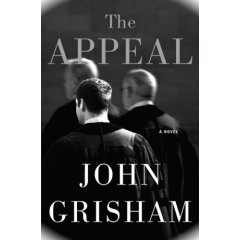 Four weeks ago, in an article called “Parody flunks out,” criminal and civil rights lawyer Harvey Silverglate blamed the politically-correct atmosphere at Harvard Law School for Barack Obama’s negative reaction to the New Yorker magazine cover of July 21, 2008. Silverglate, who lectured for many years at HLS (c.v.), says “At the very least, this atmosphere stifle[s students] from admitting (to anyone but their friends) that they even got a joke involving matters of gender, race, sexual orientation, religion, or any other hot-button issue at the center of the nation’s culture wars.” He insists:
Four weeks ago, in an article called “Parody flunks out,” criminal and civil rights lawyer Harvey Silverglate blamed the politically-correct atmosphere at Harvard Law School for Barack Obama’s negative reaction to the New Yorker magazine cover of July 21, 2008. Silverglate, who lectured for many years at HLS (c.v.), says “At the very least, this atmosphere stifle[s students] from admitting (to anyone but their friends) that they even got a joke involving matters of gender, race, sexual orientation, religion, or any other hot-button issue at the center of the nation’s culture wars.” He insists:
“[O]ne may not safely say in Harvard Yard what is constitutionally protected in Harvard Square. The same may be said for just about every campus where there once was a hallowed hall of learning.“
The f/k/a Gang has indeed noticed that an awful lot of lawyers — especially those with degrees minted in the past twenty years — throw around the terms sexism and racism quite recklessly, and seem incredibly thin-skinned and humorless (e.g., see this prior post on sexism and this one). But, frankly, we don’t know if Harvey Silverglate is right. Despite the Harvard Law domain name in our URL, your Editor hasn’t spent more than a few minutes on that campus, or any law school campus, in a couple decades. So far, there has been very little reaction on legal weblogs to Harvey’s accusations. We hope this post will motivate some of those who have been around law schools recently — as professors or students — to share their experience with political correctness and Free Speech on campus. Input from one or more of the group blawgers at Concurring Opinions, The Volokh Conspiracy, and Feminist Law Profs would be much appreciated — and ditto for any other interested and knowledgeable blawger (or reader), such as Steve Bainbridge, Ann Althouse, and Richard Posner.
 Harvey Silverglate’s indictment of Harvard Law was made in the Boston Phoenix article “Parody flunks out: Political humor is no longer welcome in Academia as administrators choke the life out of parody” (July 30, 2008). I heard about it when Bob Ambrogi did a post at Legal Blog Watch titled “The Death of Parody at Harvard Law” (Aug. 5, 2008), which also pointed to an interesting follow-up by Silverglate, posted August 4, 2008, at The Phoenix‘s group weblog “The Free for All.” In addition, Harvard Magazine posted the article “Silverglate on Obama, HLS, and that New Yorker Cover” (August 8, 2008), in its Harvard in the News online section.
Harvey Silverglate’s indictment of Harvard Law was made in the Boston Phoenix article “Parody flunks out: Political humor is no longer welcome in Academia as administrators choke the life out of parody” (July 30, 2008). I heard about it when Bob Ambrogi did a post at Legal Blog Watch titled “The Death of Parody at Harvard Law” (Aug. 5, 2008), which also pointed to an interesting follow-up by Silverglate, posted August 4, 2008, at The Phoenix‘s group weblog “The Free for All.” In addition, Harvard Magazine posted the article “Silverglate on Obama, HLS, and that New Yorker Cover” (August 8, 2008), in its Harvard in the News online section.
Like the f/k/a Gang (see our July 15th post), Silverglate thought the New Yorker cover was obvious and effective parody of the bogus claims made by Obama’s opponents.
![]() When the New Yorker cover controversy erupted, our Prof. Yabut bemoaned “the emoticonally-addicted, insight-challenged society’s inability to discern satire when they see it or hear it [and even added “winkie” emoticons to the f/k/a version of the cover, to help the parody-challenged]. We also decried the related, knee-jerk, low-EQ application of Political Correctness Bans (PCBs) to anything that might offend anybody (particularly on the Left).” In an open letter to Sen. Obama, we asked him to call off his PC Police, advising him that “You need to muzzle your staff. Whiners aren’t winners. For a real Mensch with a high EQ, taking a punch should include taking a Punch-like cartoon.”
When the New Yorker cover controversy erupted, our Prof. Yabut bemoaned “the emoticonally-addicted, insight-challenged society’s inability to discern satire when they see it or hear it [and even added “winkie” emoticons to the f/k/a version of the cover, to help the parody-challenged]. We also decried the related, knee-jerk, low-EQ application of Political Correctness Bans (PCBs) to anything that might offend anybody (particularly on the Left).” In an open letter to Sen. Obama, we asked him to call off his PC Police, advising him that “You need to muzzle your staff. Whiners aren’t winners. For a real Mensch with a high EQ, taking a punch should include taking a Punch-like cartoon.”
Similarly, Silverglate says he “expected the swift and nauseatingly self-righteous condemnation it received from the TV personalities and politically correct pundits.” But, he was caught off guard by the Obama Campaign’s strong condemnation of the cover.
So, Harvey asked:
[H]ow can Obama, such a brilliant student of American law, politics, and culture, not get the joke — or at least not recognize that the joke was on his enemies?
And answered:
“But then I realized I had failed to account for what can be called the Harvard Factor. The presumptive Democratic presidential nominee had, after all, been elected to the staff of the Harvard Law Review in the late 1980s and assumed the presidency of that august publication in 1990. By that time, the strictures of political correctness had seeped into all levels of American higher education and had utterly destroyed the sense of humor of so many college and university students.
 “At the very least, this atmosphere stifled them from admitting (to anyone but their friends) that they even got a joke involving matters of gender, race, sexual orientation, religion, or any other hot-button issue at the center of the nation’s culture wars. And, as was predictable, the intellectual rot that began to infect the academy in the mid 1980s spread to the “real world” within a single generation. All of this displaced outrage, by Obama and many of his supporters, suddenly made sense.”
“At the very least, this atmosphere stifled them from admitting (to anyone but their friends) that they even got a joke involving matters of gender, race, sexual orientation, religion, or any other hot-button issue at the center of the nation’s culture wars. And, as was predictable, the intellectual rot that began to infect the academy in the mid 1980s spread to the “real world” within a single generation. All of this displaced outrage, by Obama and many of his supporters, suddenly made sense.”
” . . . Interestingly, it was Harvard Law School, regarded by many as the apex of legal education (and located in the heart of liberal Cambridge) that early grappled with the appropriateness of punishing students for engaging in satire and parody. With the eyes of the higher-education elite watching, the fabled law school established, in the early ’90s, that a written parody poking fun at a female member of the academic community is no different than punishable ‘sexual harassment’.”
Bob Ambrogi explained at Legal Blog Watch that “Silverglate sees what happened at Harvard as symptomatic of a far more widespread trend to muzzle politically incorrect speech. It was a trend that began to emerge while Obama was still at Harvard and it is one, Silverglate believes, where Obama could help turn the course.” As Harvey puts it:
“If Obama wants to be the nation’s leader, he can start leading here. He needs to leave the atmosphere of censorship at the Harvard Law School and join the ranks of free men and women.”

 p.s. I was wondering why the study got so many responses indicating that an uncomfortable bed was the source of sleeping problems — until I saw who sponsored the survey: bed maker Silentnight Holdings Plc. For example, in addition to the 45% of lawyers citing discomfort in bed, the results showed that:
p.s. I was wondering why the study got so many responses indicating that an uncomfortable bed was the source of sleeping problems — until I saw who sponsored the survey: bed maker Silentnight Holdings Plc. For example, in addition to the 45% of lawyers citing discomfort in bed, the results showed that: … by Matt Morden –
… by Matt Morden – 

 Click to see Barbara Holmes’ “one-woman operation”
Click to see Barbara Holmes’ “one-woman operation” 
 For one thing, the Milk Board’s trademark always uses the same distinctive font, which is a far cry from Holmes’ hand-lettered batik inscription.
For one thing, the Milk Board’s trademark always uses the same distinctive font, which is a far cry from Holmes’ hand-lettered batik inscription. If the gang at the Knox Lemmon law firm are into etymology as much as Prof. Yabut is, they might want to point out in rebuttal that any kind of jug makes people think of milk and/or breasts. [The Got Milk?
If the gang at the Knox Lemmon law firm are into etymology as much as Prof. Yabut is, they might want to point out in rebuttal that any kind of jug makes people think of milk and/or breasts. [The Got Milk? 
 (update: July 31, 2008): I wonder when the lawyers at Knox Lemmon will get around to harassing the Oshkosh, Wisconsin breastfeeding advocates selling
(update: July 31, 2008): I wonder when the lawyers at Knox Lemmon will get around to harassing the Oshkosh, Wisconsin breastfeeding advocates selling  update (Dec. 1, 2008): Thanks to a Comment below from Jill Jalen, we have learned that the Milk Board is seeking a trademark for “got breastmilk?”. See our
update (Dec. 1, 2008): Thanks to a Comment below from Jill Jalen, we have learned that the Milk Board is seeking a trademark for “got breastmilk?”. See our 
 . . Thank you,
. . Thank you, 

 So far, the only actual discussion of Judge Hellerstein’s decision in the “blawgisphere” has been in the Comment section of the posting “Judge Hellerstein Lambastes 9/11 Law Firm over Fee Request,” at the
So far, the only actual discussion of Judge Hellerstein’s decision in the “blawgisphere” has been in the Comment section of the posting “Judge Hellerstein Lambastes 9/11 Law Firm over Fee Request,” at the  Any discussion about the possible invalidity, unreasonableness, or unethical nature, due to inadequate risk [or work] in a particular case, of a [25% or] one-third or 40% fee charged to any particular client, presupposes that contingency fees are supposed to relate to the actual perceived risk in each separate case. It directly undermines the attitude of the p/i cartel that the existence of any risk justifies any percentage rate that is permitted in the jurisdiction, or any rate agreed-to by the client (absent, perhaps, actual fraud or felony on the lawyer’s part, or the extreme mental incompetence of the client). And, it particularly condemns the near-universal practice of presenting as a fait accompli a “standard” percentage rate to virtually every client — a rate that is usually the maximum permitted in the State absent special judicial consent to go higher.
Any discussion about the possible invalidity, unreasonableness, or unethical nature, due to inadequate risk [or work] in a particular case, of a [25% or] one-third or 40% fee charged to any particular client, presupposes that contingency fees are supposed to relate to the actual perceived risk in each separate case. It directly undermines the attitude of the p/i cartel that the existence of any risk justifies any percentage rate that is permitted in the jurisdiction, or any rate agreed-to by the client (absent, perhaps, actual fraud or felony on the lawyer’s part, or the extreme mental incompetence of the client). And, it particularly condemns the near-universal practice of presenting as a fait accompli a “standard” percentage rate to virtually every client — a rate that is usually the maximum permitted in the State absent special judicial consent to go higher. “Huh? How can the lawyers have coasted on the work of others, if they managed to achieve settlements well in excess of similar cases? The judge’s ruling seems internally inconsistent. While I agree that it’s appropriate to cut contingency fees to reflect a firm’s reduced risk in bringing a case forward, any reduced risk that Azrael may have achieved while waiting to file its clients’ claims was counterbalanced by the extraordinary results that the firm obtained presumably as a result of holding out. Why should the firm be penalized?”
“Huh? How can the lawyers have coasted on the work of others, if they managed to achieve settlements well in excess of similar cases? The judge’s ruling seems internally inconsistent. While I agree that it’s appropriate to cut contingency fees to reflect a firm’s reduced risk in bringing a case forward, any reduced risk that Azrael may have achieved while waiting to file its clients’ claims was counterbalanced by the extraordinary results that the firm obtained presumably as a result of holding out. Why should the firm be penalized?” “Elihu Root . . . put the matter more simply: ‘About half the practice of a decent lawyer,’ he once said, ‘consists in telling would-be clients that they are damned fools and should stop.’
“Elihu Root . . . put the matter more simply: ‘About half the practice of a decent lawyer,’ he once said, ‘consists in telling would-be clients that they are damned fools and should stop.’ Judge Crotty’s willingness to hold the lawyers responsible for their opponents’ fees is a welcome change from my last direct experience with frivolousness petitions in 1990 (see
Judge Crotty’s willingness to hold the lawyers responsible for their opponents’ fees is a welcome change from my last direct experience with frivolousness petitions in 1990 (see 






 Actually, the problem is far worse than it seemed just a decade ago. Back then, cell-phoning was something that most drivers only did occasionally and quickly. Now, a large segment of the American driving public are chronic phoners, making long, serial phone calls. By 2005, Americans chalked up a billion minutes a day chatting while driving, and the numbers have surely climbed dramatically since then, as many drivers have grown to view DWP as natural and their birthright. The trend is further exacerbated by all of those auto manufacturers that are now intensely advertising hands-free devices pre-installed in their vehicles, and cell-phone service providers offering plans with virtually unlimited calling time.
Actually, the problem is far worse than it seemed just a decade ago. Back then, cell-phoning was something that most drivers only did occasionally and quickly. Now, a large segment of the American driving public are chronic phoners, making long, serial phone calls. By 2005, Americans chalked up a billion minutes a day chatting while driving, and the numbers have surely climbed dramatically since then, as many drivers have grown to view DWP as natural and their birthright. The trend is further exacerbated by all of those auto manufacturers that are now intensely advertising hands-free devices pre-installed in their vehicles, and cell-phone service providers offering plans with virtually unlimited calling time. Want to know who’s to blame for California’s mostly-farcical hands-free cellphone safety law? The
Want to know who’s to blame for California’s mostly-farcical hands-free cellphone safety law? The 

 Dave Hess also spotlighted the tale of Level 3 Sex Offender Keith Shortsleeves, who is caught in a hellish limbo created by the intersection of SO residency restrictions in Hudson Falls and Washington County, NY, and “a little-known state law that requires hospital patients to show they have somewhere to go that meets their care needs before they can be discharged.” “
Dave Hess also spotlighted the tale of Level 3 Sex Offender Keith Shortsleeves, who is caught in a hellish limbo created by the intersection of SO residency restrictions in Hudson Falls and Washington County, NY, and “a little-known state law that requires hospital patients to show they have somewhere to go that meets their care needs before they can be discharged.” “
 “Sixty-nine years ago, a young Yale law professor rocked the legal establishment with a scathing indictment of the American civil justice system entitled Woe unto You, Lawyers! Almost overnight Fred Rodell became the nation’s leading debunker of legal myths, and the target of untold ire from thin-skinned lawyers. And his provocative observations are as accurate today as they were seven decades ago.”
“Sixty-nine years ago, a young Yale law professor rocked the legal establishment with a scathing indictment of the American civil justice system entitled Woe unto You, Lawyers! Almost overnight Fred Rodell became the nation’s leading debunker of legal myths, and the target of untold ire from thin-skinned lawyers. And his provocative observations are as accurate today as they were seven decades ago.” p.s. In case you missed the story of the drunken teens who vandalized Robert Frost’s former home and were sentenced to a lecture on poetry, here are some links (all dated June 3, 2008): “
p.s. In case you missed the story of the drunken teens who vandalized Robert Frost’s former home and were sentenced to a lecture on poetry, here are some links (all dated June 3, 2008): “ After shopping last week for a “pre-owned vehicle,” I’ve just added Used Car Dealers here in New York State to my list of sellers who use the word “standard” (1) to avoid negotiating with consumers and competing with other sellers, and (2) to imply that the State requires that they offer only the particular option that is being proffered to the consumer on a take-it-or-leave it basis. The word “standard” is employed to convince the consumer that the deal being offered is fair and written in stone.
After shopping last week for a “pre-owned vehicle,” I’ve just added Used Car Dealers here in New York State to my list of sellers who use the word “standard” (1) to avoid negotiating with consumers and competing with other sellers, and (2) to imply that the State requires that they offer only the particular option that is being proffered to the consumer on a take-it-or-leave it basis. The word “standard” is employed to convince the consumer that the deal being offered is fair and written in stone.

 See the
See the 


 Unlike New York, the FTC also provides “
Unlike New York, the FTC also provides “

 “Educating the voters on the background of judges sounds as if it would provide plenty of meaningful information upon which the public could then vote with some legitimate basis. The problem is that it doesn’t. The judicial candidates can’t campaign based on how many defendants they plan to lock up, or how they hate plaintiffs in personal injury cases and plan to keep verdicts low. They can’t opine at all about how they would rule if elected, as that would be a flagrant violation of ethics.
“Educating the voters on the background of judges sounds as if it would provide plenty of meaningful information upon which the public could then vote with some legitimate basis. The problem is that it doesn’t. The judicial candidates can’t campaign based on how many defendants they plan to lock up, or how they hate plaintiffs in personal injury cases and plan to keep verdicts low. They can’t opine at all about how they would rule if elected, as that would be a flagrant violation of ethics.
 For an excellent fictional account of what can go wrong (and really does happen) in judicial elections, you should read John Grisham’s latest novel,
For an excellent fictional account of what can go wrong (and really does happen) in judicial elections, you should read John Grisham’s latest novel,  “Judge Schwartz was propped on two pillows, either because his hemorrhoids were flaring up or because, at five foot three, he couldn’t see over the bench. Known as King of the Curmudgeons when he was younger, his disposition had gotten even worse with age. He now had the title of “senior judge,” meaning he was somewhere between Medicare and the mortuary. No longer permitted to preside over trials because of lousy hearing, a weak bladder, and chronic flatulence, he nonetheless handled bail hearings, motions, and arraignments.”
“Judge Schwartz was propped on two pillows, either because his hemorrhoids were flaring up or because, at five foot three, he couldn’t see over the bench. Known as King of the Curmudgeons when he was younger, his disposition had gotten even worse with age. He now had the title of “senior judge,” meaning he was somewhere between Medicare and the mortuary. No longer permitted to preside over trials because of lousy hearing, a weak bladder, and chronic flatulence, he nonetheless handled bail hearings, motions, and arraignments.”





 So, David, did you forget the haiku again? Almost. However, below (and, at the last minute, also sprinkled above) is my first focus on the
So, David, did you forget the haiku again? Almost. However, below (and, at the last minute, also sprinkled above) is my first focus on the 
 What are we supposed to do tonight? Finish reading the newest TCL, or start preparing our
What are we supposed to do tonight? Finish reading the newest TCL, or start preparing our